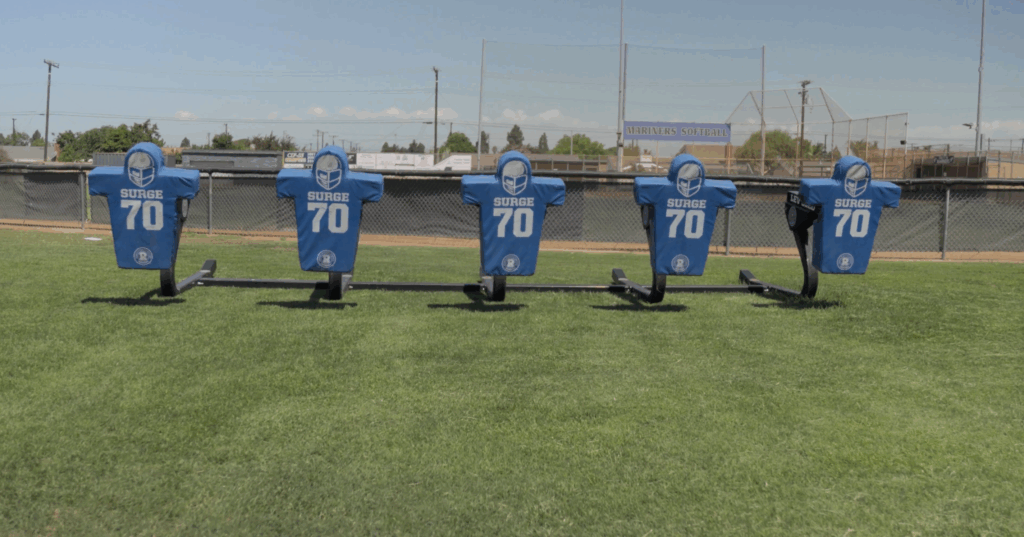Before the CIF introduced wet bulb globe temperature (WBGT) guidelines, every school had its own definition of ‘safe enough.’ For David Mamelli, District Athletic Director at Garden Grove Unified School District (GGUSD), that was the real problem.

“Our district might have had uniformity in where we were going,” David says. “But the schools around us weren’t.”
When Everyone Followed the Heat Safety Rules Differently

With over 35,000 students across nearly 70 campuses, GGUSD had a lot to protect. When CIF’s statewide heat stress policy went into effect, it was meant to bring consistency. But on the ground, things looked very different. One school used a Kestrel. Another pulled data from a phone app. A few had nothing at all.
“Now that we’re all using the wet bulb, it really comes down to: are you using a handheld? Or are you using a weather station like we have with Perry Weather?” David says.
That question marked the divide between guesswork and confidence.
“We Were Waiting Just to Get a Reading”
Before Perry Weather, Garden Grove trainers relied on handheld Kestrels to get WBGT readings. But anyone who’s used a handheld knows: it’s not just a quick point-and-click.

“You have to let it sit out there and acclimate,” David explains. “You’re waiting 15 to 20 minutes just to get a reading.”
In theory, the Kestrel gave you real-time data. In reality, it slowed down decisions, left room for error, and forced athletic staff to sprint between fields, timers, and radios. At the high school level, where one trainer might oversee multiple teams across different fields, it just didn’t work.
“Perry Weather is Always On”

GGUSD installed Perry Weather’s on-site weather stations, which monitor WBGT 24/7 and push automatic alerts to key staff. The difference was immediate.
“The great thing about the Perry Weather station is it’s always on,” David says. “It’s constantly acclimating itself. We don’t have to do anything.”
Instead of waiting for readings, Perry Weather gave them real-time dashboards, automated alerts, and historical logs that could prove decisions made in the moment.
“Now we have a policy risk alert when we log into our dashboard,” he adds. “We can monitor throughout the day, we can forecast, and we can use the ‘Ask a Meteorologist‘ feature to prepare.”
When the WBGT Hits 86.2°F, Everyone Knows
GGUSD follows CIF’s redline rule: if WBGT hits 86.2°F, all outdoor activity stops. No questions. No pushback.
Before Perry Weather, enforcing that policy meant frantic phone calls.
“The athletic trainer or athletic director would have to call 30 different coaches to say, ‘Shut it down.’ That’s not sustainable,” David says.
Now, they don’t have to. With Perry Weather’s public-facing widget, every coach, parent, and administrator sees the same real-time alert. Practices are delayed. Games are paused. Everyone is on the same page.
“There’s no more confusion about what we’re following. CIF guidelines are now visible to everyone.”
Lights, Forecast, Action

Perry Weather didn’t just help them cancel or pause practices. It helped them plan better ones.
“We added field lighting in the past couple years,” David says. “Now, when we know it’s going to be a high wet bulb day, we can plan to delay practice until evening. As soon as the sun angle changes, that wet bulb drops. Perry Weather gives us that foresight.”
That insight turned a reactive safety policy into a proactive scheduling strategy. And it meant they could still run full practices—without compromising student safety.
Empowering the Entire Staff

Perry Weather helped shift the burden from one overextended athletic trainer to a shared system of accountability. With mobile-friendly dashboards and public widgets, every staff member can see the same WBGT data in real time.
“It’s not just on the athletic trainer anymore,” David says. “It’s on the coaches. It’s on the administrators. And they have that information instantly.”
More Than Heat: The One-Stop Weather Safety Hub

While heat stress is the big story in Southern California, it’s not the only one.
“Perry Weather really is a one-stop shop for all things weather and safety-related,” David explains. “I can see the wet bulb. I can break it down: heat index, wind, air temperature, AQI. It’s all right there.”
That includes the ability to reach out to Perry Weather’s 24/7 meteorologist team. If there’s a storm on the horizon or a wildfire nearby, the district can talk to a real person and get real forecasts tailored to their location.
Accountability in Every Direction

More than anything, Perry Weather gave GGUSD confidence and credibility.
“I think our athletes are absolutely safer,” David says. “And I think we are certainly safer with Perry Weather than we are with any other source we had before.”
No more manual logs. No more parent complaints. No more split-second decisions with no backup.
Just real data. Shared visibility. And a district-wide system that turns CIF policy into protection.
Try Perry Weather Free for 14 Days
Perry Weather helps school districts like Garden Grove unify WBGT monitoring, simplify CIF compliance, and protect student-athletes with real-time alerts, on-campus sensors, 24/7 meteorologist support, and historical reporting.
See how it works on your campus. Try it free today.
















